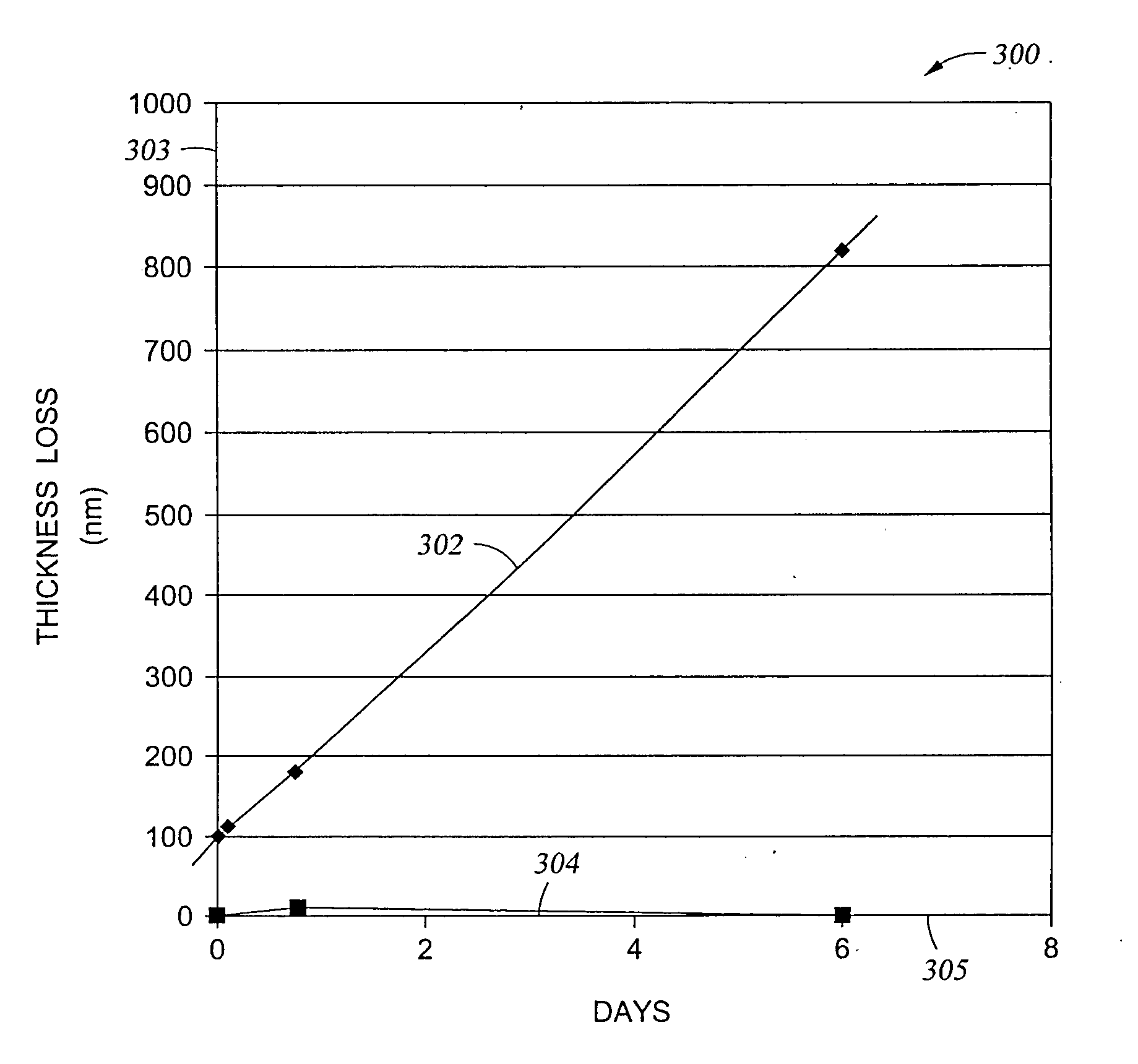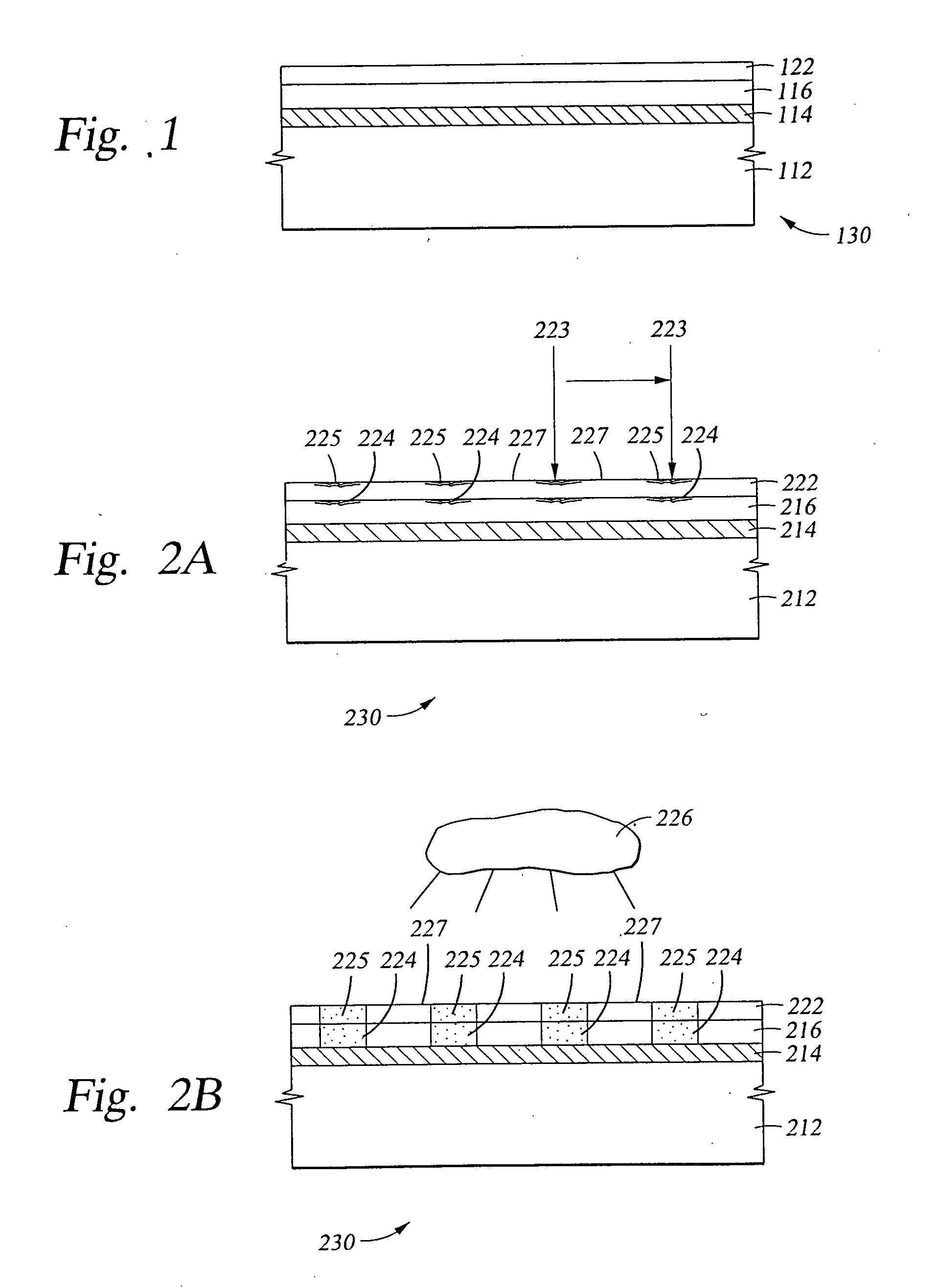Method of increasing the shelf life of a photomask substrate
a technology of photomask and substrate, which is applied in the direction of auxillary/base layers of photosensitive materials, instruments, photosensitive materials, etc., can solve the problem of not providing as consistent a critical dimension
- Summary
- Abstract
- Description
- Claims
- Application Information
AI Technical Summary
Benefits of technology
Problems solved by technology
Method used
Image
Examples
example one
[0042] With reference to FIG. 2A, the substrate material 212, chrome-containing layer 214, and CAR layer 216 may be materials conventionally known in the art. For example, the CAR may be a positive tone photoresist such as APEX™, UVIIHS™, Rjv5™, and UV6™ manufactured by Shipley Co., Inc.; AZ DX1000P™, DX1200P™, and DX1300P™ manufactured by Clariant Corporation; ARCH8010™, and ARCH 8030™ manufactured by Arch Chemicals; ODUR-1010™ and ODtJR-1013™ manufactured by Tokyo Ohka Kogyo Co., Ltd.; and PRKI10A5™ manufactured by Sumitomo Chemicals, Inc. Examples of negative tone CARs are SAL-601™, and SAL-603 manufactured by Shipley Co., Inc.; EN-009PG™ manufactured by Tokyo Ohka Kogyo Co., Ltd., and NEB 22™ manufactured by Sumitomo Chemicals, Inc.
[0043] The topcoat material 222 applied over the CAR layer 216 may be a conventional material such as AQUATAR II™, AQUATAR III™, AQUATAR IV™, manufactured by Clariant Corporation, and NFC 540™ and NFC 620™ manufactured by JSR Chemical Co. of Japan, a...
example two
[0052] With reference to FIG. 2A again, the stability of the combination of the CAR 216 with the topcoat 222 is critically important in obtaining a uniform critical dimension for the direct write pattern across the entire surface of the substrate being patterned. In the present instance, an ALTA™ 257 nm direct write laser was used for writing of a pattern of lines 225 and spaces 227, where the lines 225 were 0.35μ in width and the spaces 227 between the lines were 0.35μ in width. After direct write imaging radiation 223 was applied to create an image 224 in CAR 216, the substrate 230 was baked as illustrated in FIG. 2B, to promote formation of a complete image 224 using application of a heat (which is illustrated by heat source 226, for example and not by way of limitation).
[0053] With reference to FIG. 2C, the neutral pH topcoat 222 has been removed to permit development of the underlying acidic imaged CAR 216. In some instances, where the topcoat 222 is removed by the developer f...
PUM
| Property | Measurement | Unit |
|---|---|---|
| wavelength | aaaaa | aaaaa |
| wavelength | aaaaa | aaaaa |
| wavelength | aaaaa | aaaaa |
Abstract
Description
Claims
Application Information
 Login to View More
Login to View More - R&D
- Intellectual Property
- Life Sciences
- Materials
- Tech Scout
- Unparalleled Data Quality
- Higher Quality Content
- 60% Fewer Hallucinations
Browse by: Latest US Patents, China's latest patents, Technical Efficacy Thesaurus, Application Domain, Technology Topic, Popular Technical Reports.
© 2025 PatSnap. All rights reserved.Legal|Privacy policy|Modern Slavery Act Transparency Statement|Sitemap|About US| Contact US: help@patsnap.com



